Foundations and Trends R in Machine Learning
Vol. 8, No. 3-4 (2015) 231–358
c 2015 S. Bubeck
DOI: 10.1561/2200000050
Convex Optimization: Algorithms and
Complexity
Sébastien Bubeck
Theory Group, Microsoft Research
sebubeck@microsoft.com
5
1
0
2
v
o
N
6
1
]
.
C
O
h
t
a
m
[
2
v
0
8
9
4
.
5
0
4
1
:
v
i
X
r
a
�
Contents
1 Introduction
232
1.1 Some convex optimization problems in machine learning . 233
1.2 Basic properties of convexity . . . . . . . . . . . . . . . . 234
1.3 Why convexity? . . . . . . . . . . . . . . . . . . . . . . . 237
1.4 Black-box model . . . . . . . . . . . . . . . . . . . . . . . 238
1.5 Structured optimization . . . . . . . . . . . . . . . . . . . 240
1.6 Overview of the results and disclaimer
. . . . . . . . . . . 240
2 Convex optimization in finite dimension
244
2.1 The center of gravity method . . . . . . . . . . . . . . . . 245
2.2 The ellipsoid method . . . . . . . . . . . . . . . . . . . . 247
2.3 Vaidya’s cutting plane method . . . . . . . . . . . . . . . 250
2.4 Conjugate gradient
. . . . . . . . . . . . . . . . . . . . . 258
3 Dimension-free convex optimization
262
3.1 Projected subgradient descent for Lipschitz functions . . . 263
3.2 Gradient descent for smooth functions . . . . . . . . . . . 266
3.3 Conditional gradient descent, aka Frank-Wolfe . . . . . . . 271
3.4 Strong convexity . . . . . . . . . . . . . . . . . . . . . . . 276
3.5 Lower bounds
. . . . . . . . . . . . . . . . . . . . . . . . 279
3.6 Geometric descent . . . . . . . . . . . . . . . . . . . . . . 284
ii
�
iii
3.7 Nesterov’s accelerated gradient descent
. . . . . . . . . . 289
4 Almost dimension-free convex optimization in non-Euclidean
spaces
296
4.1 Mirror maps . . . . . . . . . . . . . . . . . . . . . . . . . 298
4.2 Mirror descent . . . . . . . . . . . . . . . . . . . . . . . . 299
4.3 Standard setups for mirror descent . . . . . . . . . . . . . 301
4.4 Lazy mirror descent, aka Nesterov’s dual averaging . . . . 303
4.5 Mirror prox . . . . . . . . . . . . . . . . . . . . . . . . . . 305
4.6 The vector field point of view on MD, DA, and MP . . . . 307
5 Beyond the black-box model
309
5.1 Sum of a smooth and a simple non-smooth term . . . . . 310
5.2 Smooth saddle-point representation of a non-smooth function312
5.3
Interior point methods . . . . . . . . . . . . . . . . . . . . 318
6 Convex optimization and randomness
329
6.1 Non-smooth stochastic optimization . . . . . . . . . . . . 330
6.2 Smooth stochastic optimization and mini-batch SGD . . . 332
6.3 Sum of smooth and strongly convex functions . . . . . . . 334
6.4 Random coordinate descent . . . . . . . . . . . . . . . . . 338
6.5 Acceleration by randomization for saddle points . . . . . . 342
6.6 Convex relaxation and randomized rounding . . . . . . . . 343
6.7 Random walk based methods . . . . . . . . . . . . . . . . 347
Acknowledgements
References
349
351
�
Abstract
This monograph presents the main complexity theorems in convex op-
timization and their corresponding algorithms. Starting from the fun-
damental theory of black-box optimization, the material progresses to-
wards recent advances in structural optimization and stochastic op-
timization. Our presentation of black-box optimization, strongly in-
fluenced by Nesterov’s seminal book and Nemirovski’s lecture notes,
includes the analysis of cutting plane methods, as well as (acceler-
ated) gradient descent schemes. We also pay special attention to non-
Euclidean settings (relevant algorithms include Frank-Wolfe, mirror
descent, and dual averaging) and discuss their relevance in machine
learning. We provide a gentle introduction to structural optimization
with FISTA (to optimize a sum of a smooth and a simple non-smooth
term), saddle-point mirror prox (Nemirovski’s alternative to Nesterov’s
smoothing), and a concise description of interior point methods. In
stochastic optimization we discuss stochastic gradient descent, mini-
batches, random coordinate descent, and sublinear algorithms. We also
briefly touch upon convex relaxation of combinatorial problems and the
use of randomness to round solutions, as well as random walks based
methods.
S. Bubeck. Convex Optimization: Algorithms and Complexity. Foundations and
Trends R in Machine Learning, vol. 8, no. 3-4, pp. 231–358, 2015.
DOI: 10.1561/2200000050.
�
1
Introduction
The central objects of our study are convex functions and convex sets
in Rn.
Definition 1.1 (Convex sets and convex functions). A set X ⊂ Rn is
said to be convex if it contains all of its segments, that is
∀(x, y, γ) ∈ X × X × [0, 1], (1 − γ)x + γy ∈ X .
A function f : X → R is said to be convex if it always lies below its
chords, that is
∀(x, y, γ) ∈ X × X × [0, 1], f((1 − γ)x + γy) ≤ (1 − γ)f(x) + γf(y).
We are interested in algorithms that take as input a convex set X
and a convex function f and output an approximate minimum of f
over X . We write compactly the problem of finding the minimum of f
over X as
min. f(x)
s.t. x ∈ X .
In the following we will make more precise how the set of constraints X
and the objective function f are specified to the algorithm. Before that
232
�
1.1. Some convex optimization problems in machine learning
233
we proceed to give a few important examples of convex optimization
problems in machine learning.
1.1 Some convex optimization problems in machine learning
Many fundamental convex optimization problems in machine learning
take the following form:
mX
i=1
fi(x) + λR(x),
min.
x∈Rn
(1.1)
where the functions f1, . . . , fm,R are convex and λ ≥ 0 is a fixed
parameter. The interpretation is that fi(x) represents the cost of using
x on the ith element of some data set, and R(x) is a regularization term
which enforces some “simplicity” in x. We discuss now major instances
of (1.1). In all cases one has a data set of the form (wi, yi) ∈ Rn×Y, i =
1, . . . , m and the cost function fi depends only on the pair (wi, yi). We
refer to Hastie et al. [2001], Schölkopf and Smola [2002], Shalev-Shwartz
and Ben-David [2014] for more details on the origin of these important
problems. The mere objective of this section is to expose the reader to a
few concrete convex optimization problems which are routinely solved.
In classification one has Y = {−1, 1}. Taking fi(x) = max(0, 1 −
yix>wi) (the so-called hinge loss) and R(x) = kxk2
2 one obtains the
SVM problem. On the other hand taking fi(x) = log(1+exp(−yix>wi))
(the logistic loss) and again R(x) = kxk2
2 one obtains the (regularized)
logistic regression problem.
In regression one has Y = R. Taking fi(x) = (x>wi − yi)2 and
R(x) = 0 one obtains the vanilla least-squares problem which can be
rewritten in vector notation as
min.
x∈Rn
kW x − Y k2
2,
where W ∈ Rm×n is the matrix with w>
i on the ith row and Y =
(y1, . . . , yn)>. With R(x) = kxk2
2 one obtains the ridge regression prob-
lem, while with R(x) = kxk1 this is the LASSO problem Tibshirani
[1996].
Our last two examples are of a slightly different flavor. In particular
the design variable x is now best viewed as a matrix, and thus we
�
234
Introduction
denote it by a capital letter X. The sparse inverse covariance estimation
problem can be written as follows, given some empirical covariance
matrix Y ,
min. Tr(XY ) − logdet(X) + λkXk1
s.t. X ∈ Rn×n, X> = X, X 0.
Intuitively the above problem is simply a regularized maximum likeli-
hood estimator (under a Gaussian assumption).
Finally we introduce the convex version of the matrix completion
problem. Here our data set consists of observations of some of the
entries of an unknown matrix Y , and we want to “complete" the unob-
served entries of Y in such a way that the resulting matrix is “simple"
(in the sense that it has low rank). After some massaging (see Can-
dès and Recht [2009]) the (convex) matrix completion problem can be
formulated as follows:
min. Tr(X)
s.t. X ∈ Rn×n, X> = X, X 0, Xi,j = Yi,j for (i, j) ∈ Ω,
where Ω ⊂ [n]2 and (Yi,j)(i,j)∈Ω are given.
1.2 Basic properties of convexity
A basic result about convex sets that we shall use extensively is the
Separation Theorem.
Theorem 1.1 (Separation Theorem). Let X ⊂ Rn be a closed convex
set, and x0 ∈ Rn \ X . Then, there exists w ∈ Rn and t ∈ R such that
w>x0 < t, and ∀x ∈ X , w>x ≥ t.
Note that if X is not closed then one can only guarantee that
w>x0 ≤ w>x,∀x ∈ X (and w 6= 0). This immediately implies the Sup-
porting Hyperplane Theorem (∂X denotes the boundary of X , that is
the closure without the interior):
Theorem 1.2 (Supporting Hyperplane Theorem). Let X ⊂ Rn be a con-
vex set, and x0 ∈ ∂X . Then, there exists w ∈ Rn, w 6= 0 such that
∀x ∈ X , w>x ≥ w>x0.
�
1.2. Basic properties of convexity
235
We introduce now the key notion of subgradients.
Definition 1.2 (Subgradients). Let X ⊂ Rn, and f : X → R. Then
g ∈ Rn is a subgradient of f at x ∈ X if for any y ∈ X one has
f(x) − f(y) ≤ g>(x − y).
The set of subgradients of f at x is denoted ∂f(x).
To put it differently, for any x ∈ X and g ∈ ∂f(x), f is above the
linear function y 7→ f(x)+g>(y−x). The next result shows (essentially)
that a convex functions always admit subgradients.
Proposition 1.1 (Existence of subgradients). Let X ⊂ Rn be convex,
and f : X → R. If ∀x ∈ X , ∂f(x) 6= ∅ then f is convex. Conversely
if f is convex then for any x ∈ int(X ), ∂f(x) 6= ∅. Furthermore if f is
convex and differentiable at x then ∇f(x) ∈ ∂f(x).
Before going to the proof we recall the definition of the epigraph of
a function f : X → R:
epi(f) = {(x, t) ∈ X × R : t ≥ f(x)}.
It is obvious that a function is convex if and only if its epigraph is a
convex set.
Proof. The first claim is almost trivial: let g ∈ ∂f((1− γ)x + γy), then
by definition one has
f((1 − γ)x + γy) ≤ f(x) + γg>(y − x),
f((1 − γ)x + γy) ≤ f(y) + (1 − γ)g>(x − y),
which clearly shows that f is convex by adding the two (appropriately
rescaled) inequalities.
Now let us prove that a convex function f has subgradients in the
interior of X . We build a subgradient by using a supporting hyperplane
to the epigraph of the function. Let x ∈ X . Then clearly (x, f(x)) ∈
∂epi(f), and epi(f) is a convex set. Thus by using the Supporting
Hyperplane Theorem, there exists (a, b) ∈ Rn × R such that
a>x + bf(x) ≥ a>y + bt,∀(y, t) ∈ epi(f).
(1.2)
�
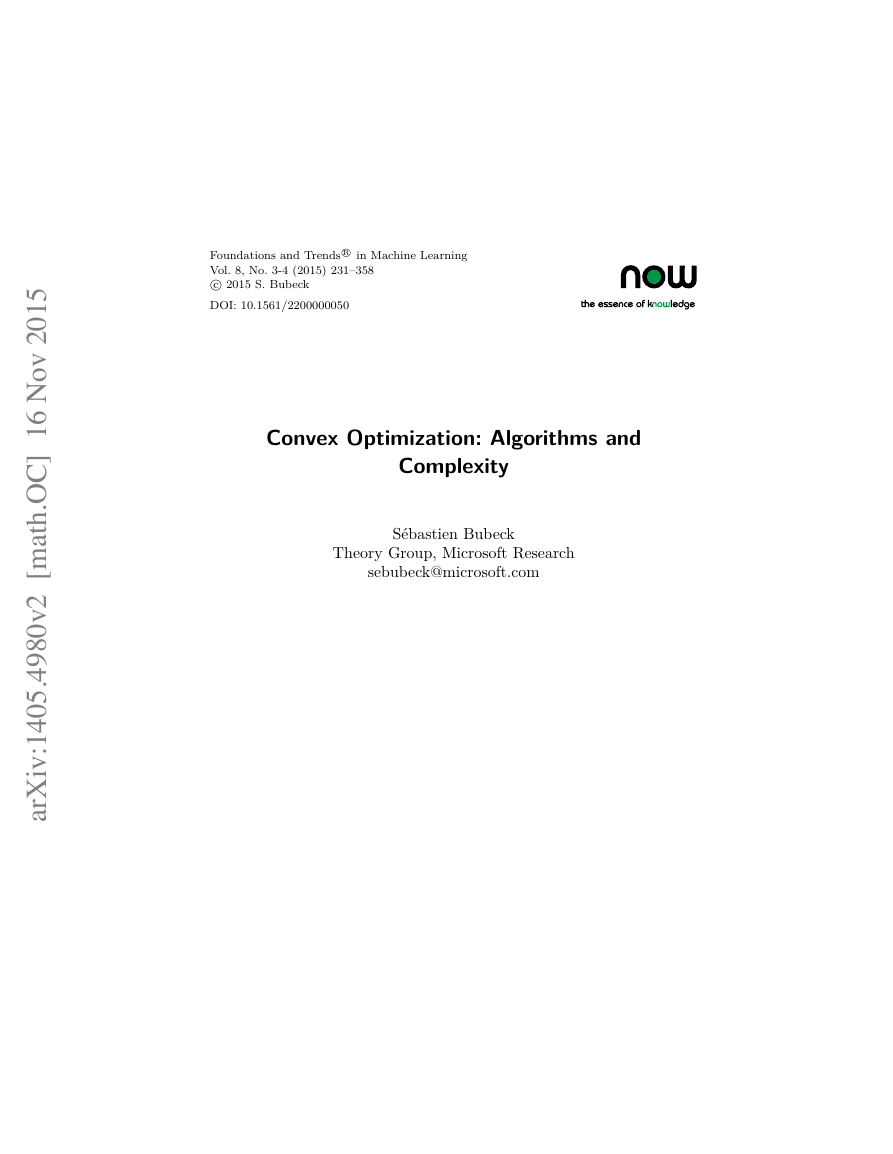
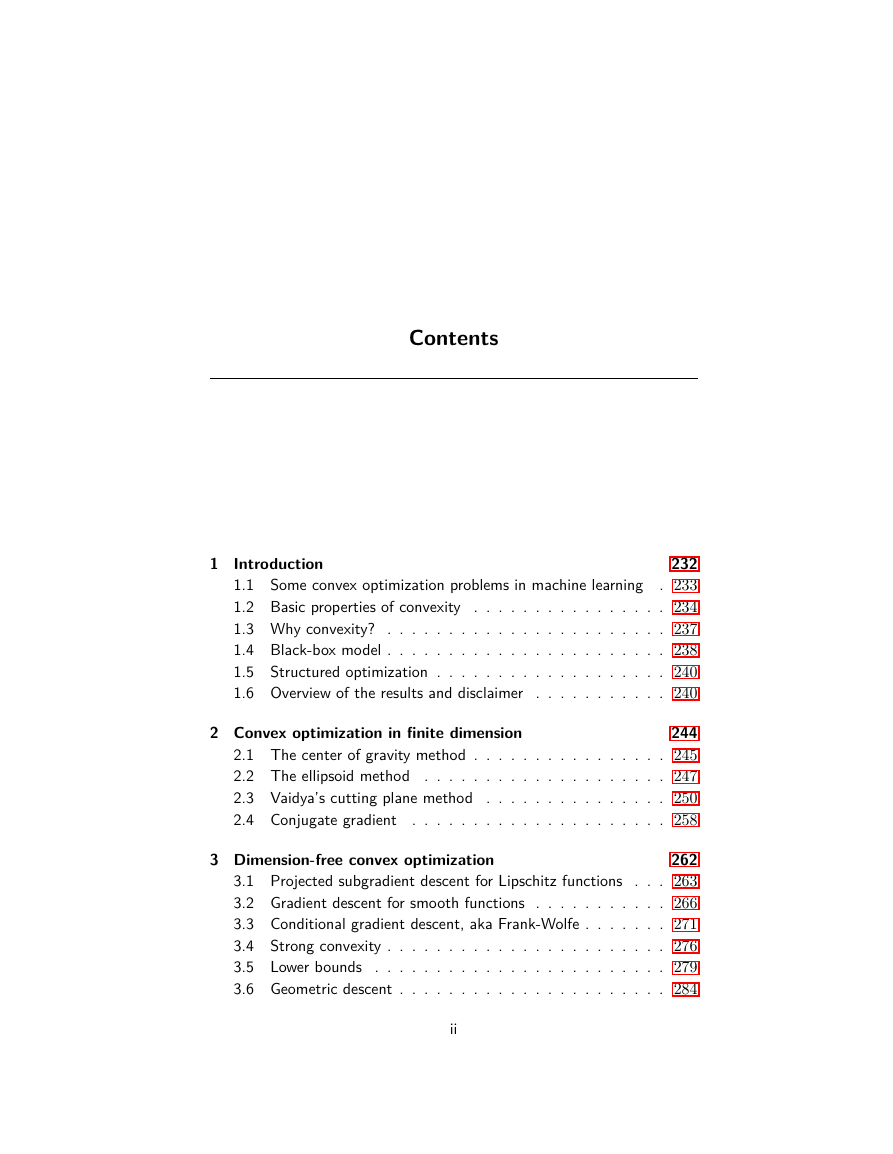


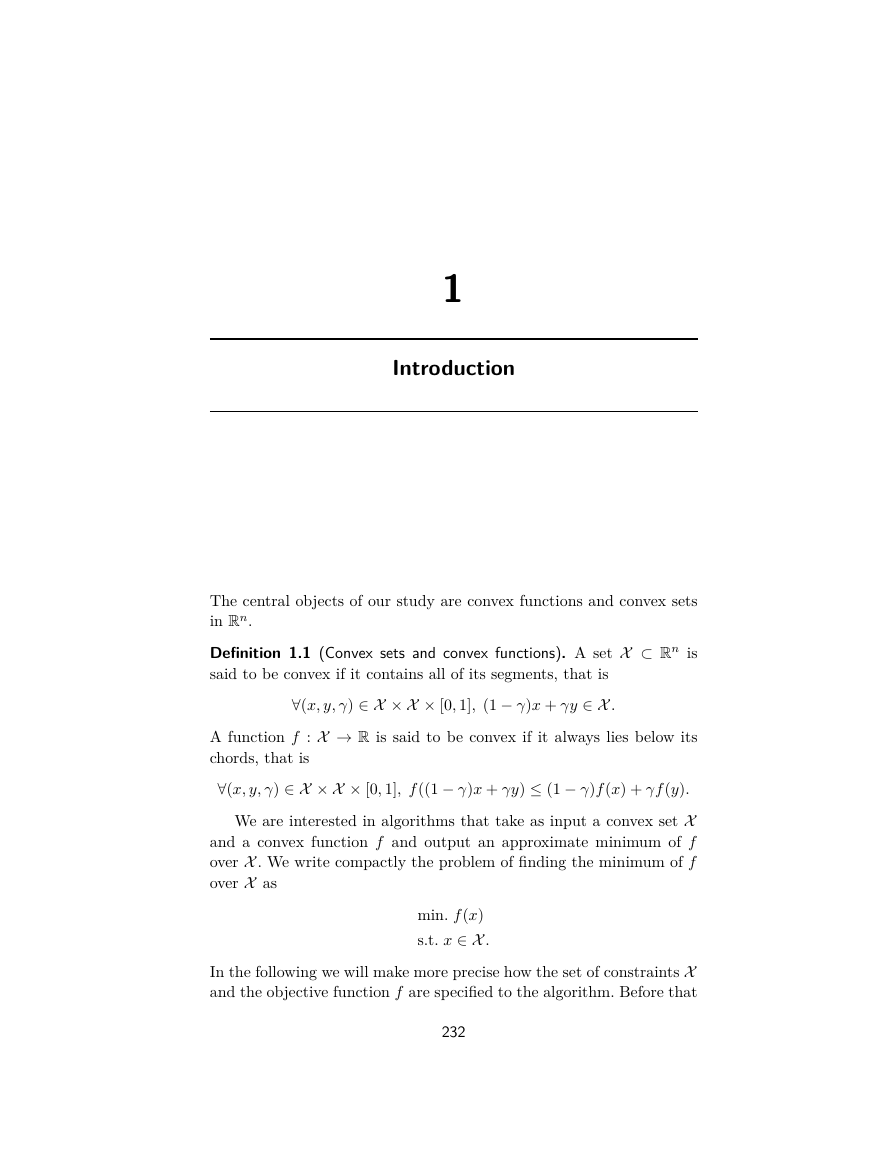
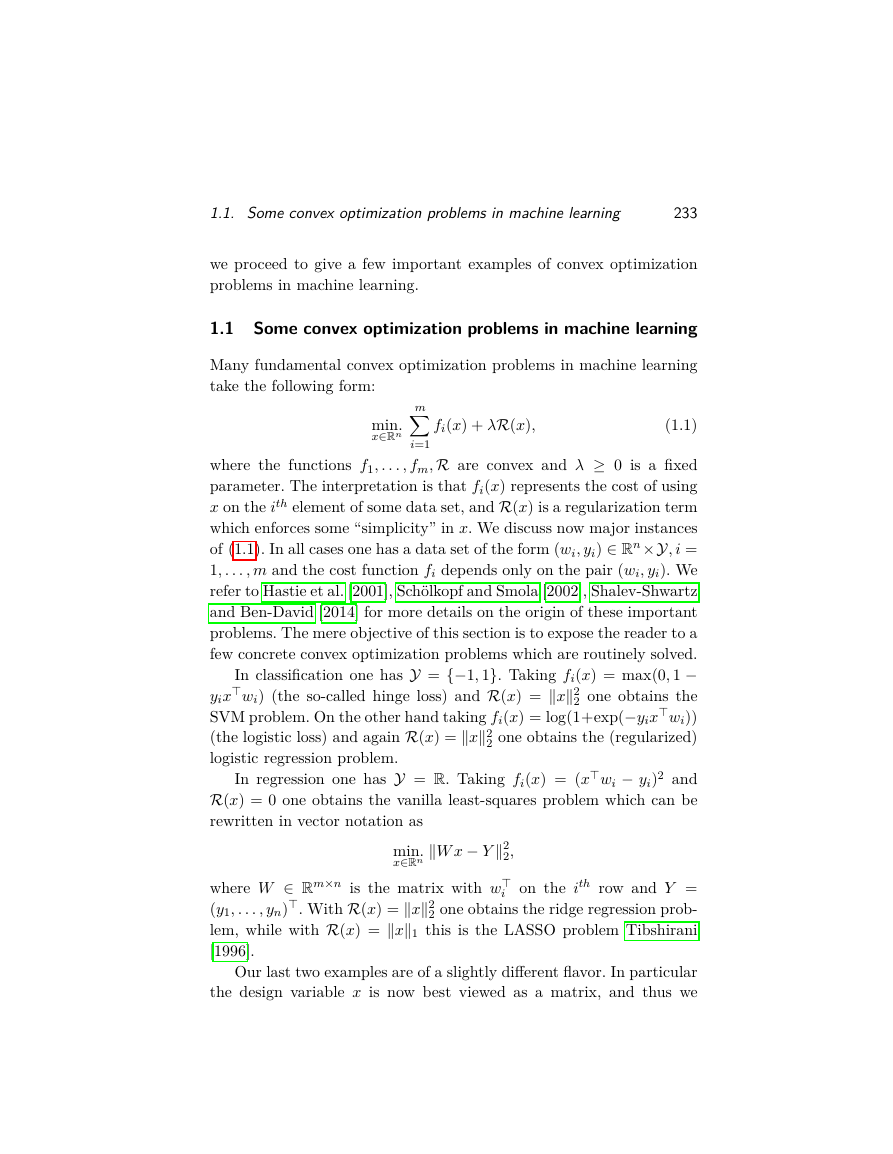

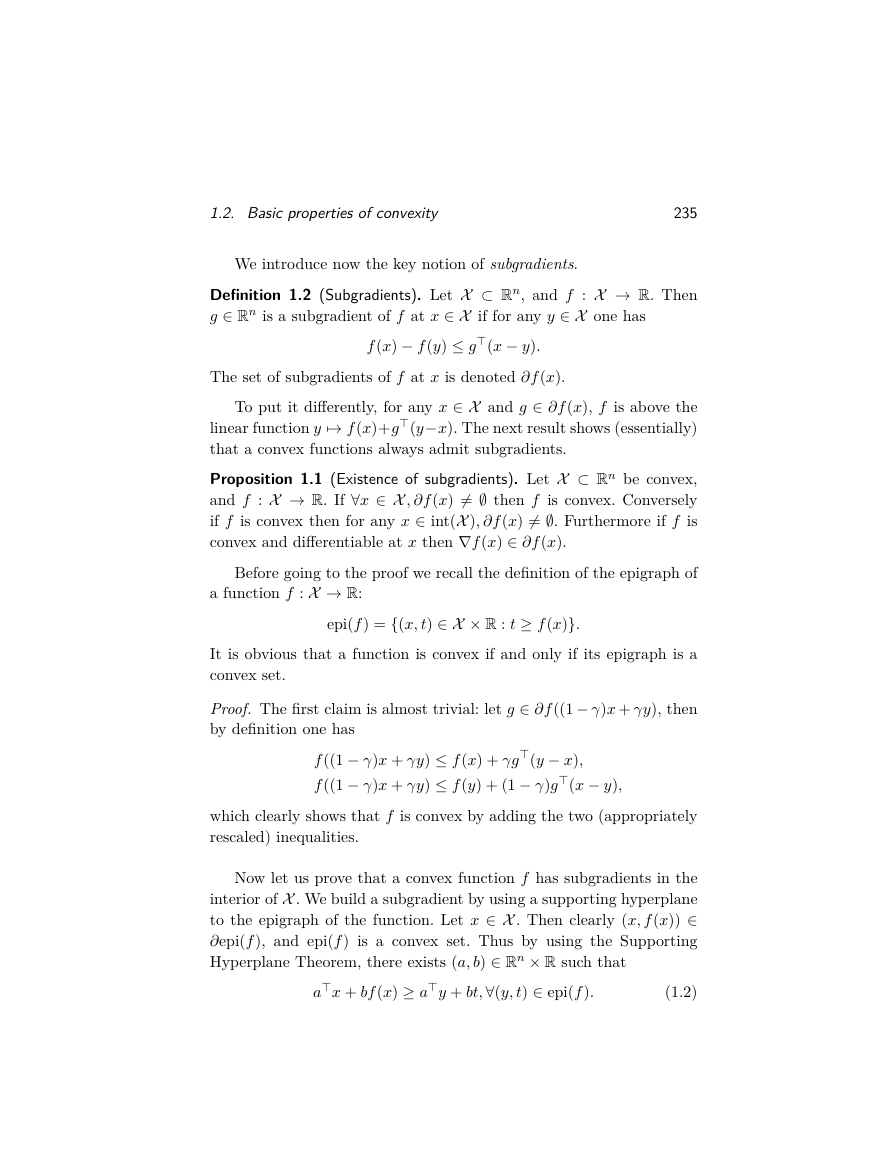








 2023年江西萍乡中考道德与法治真题及答案.doc
2023年江西萍乡中考道德与法治真题及答案.doc 2012年重庆南川中考生物真题及答案.doc
2012年重庆南川中考生物真题及答案.doc 2013年江西师范大学地理学综合及文艺理论基础考研真题.doc
2013年江西师范大学地理学综合及文艺理论基础考研真题.doc 2020年四川甘孜小升初语文真题及答案I卷.doc
2020年四川甘孜小升初语文真题及答案I卷.doc 2020年注册岩土工程师专业基础考试真题及答案.doc
2020年注册岩土工程师专业基础考试真题及答案.doc 2023-2024学年福建省厦门市九年级上学期数学月考试题及答案.doc
2023-2024学年福建省厦门市九年级上学期数学月考试题及答案.doc 2021-2022学年辽宁省沈阳市大东区九年级上学期语文期末试题及答案.doc
2021-2022学年辽宁省沈阳市大东区九年级上学期语文期末试题及答案.doc 2022-2023学年北京东城区初三第一学期物理期末试卷及答案.doc
2022-2023学年北京东城区初三第一学期物理期末试卷及答案.doc 2018上半年江西教师资格初中地理学科知识与教学能力真题及答案.doc
2018上半年江西教师资格初中地理学科知识与教学能力真题及答案.doc 2012年河北国家公务员申论考试真题及答案-省级.doc
2012年河北国家公务员申论考试真题及答案-省级.doc 2020-2021学年江苏省扬州市江都区邵樊片九年级上学期数学第一次质量检测试题及答案.doc
2020-2021学年江苏省扬州市江都区邵樊片九年级上学期数学第一次质量检测试题及答案.doc 2022下半年黑龙江教师资格证中学综合素质真题及答案.doc
2022下半年黑龙江教师资格证中学综合素质真题及答案.doc